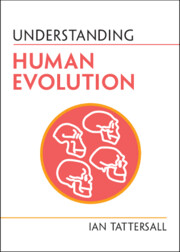Book contents
- >Understanding Human Evolution
- Series page
- Understanding Human Evolution
- Copyright page
- Reviews
- Dedication
- Frontispiece
- Contents
- Maps
- Foreword
- Preface
- Acknowledgments
- 1 Evolution
- 2 Technology: Dating, Diets, and Development
- 3 Discovery and Interpretation of the Human Fossil Record: The Early Days
- 4 Discovery and Interpretation of the Human Fossil Record: Later Developments
- 5 Early Bipeds
- 6 The Muddle in the Middle
- 7 Homo heidelbergensis and the Neanderthals
- 8 The Emergence and Spread of Homo sapiens
- Epilogue
- Summary of Common Misunderstandings
- References and Further Reading
- Figure Credits
- Index
6 - The Muddle in the Middle
Published online by Cambridge University Press: 21 July 2022
- >Understanding Human Evolution
- Series page
- Understanding Human Evolution
- Copyright page
- Reviews
- Dedication
- Frontispiece
- Contents
- Maps
- Foreword
- Preface
- Acknowledgments
- 1 Evolution
- 2 Technology: Dating, Diets, and Development
- 3 Discovery and Interpretation of the Human Fossil Record: The Early Days
- 4 Discovery and Interpretation of the Human Fossil Record: Later Developments
- 5 Early Bipeds
- 6 The Muddle in the Middle
- 7 Homo heidelbergensis and the Neanderthals
- 8 The Emergence and Spread of Homo sapiens
- Epilogue
- Summary of Common Misunderstandings
- References and Further Reading
- Figure Credits
- Index
Summary
Once Louis Leakey and his colleagues had described Homo habilis in 1964 the search for his Holy Grail of the “earliest Homo” was on, and the field was wide open for other entrants that had very little in common with Homo sapiens, the species by which our genus is defined. Genera are hopefully monophyletic collections of species descended from the same common ancestor; but there are no formal rules governing how inclusive they can be, so you could in theory create a monophyletic genus by including every primate on the planet. By unwritten convention, however, zoological genera are in effect the largest readily (I almost wrote “intuitively”) recognizable unit, species being basically variations on the theme established by the genus. All species of the genus Felis are identifiably cats, and all Rattus are visibly rats. By this rule-of-thumb, as Bernard Wood and Mark Collard pointed out over two decades ago, the genus Homo should be confined to species that have significant resemblances to Homo sapiens. Just being related to the Homo clade, at some remove, is simply not enough.
Keywords
- Type
- Chapter
- Information
- Understanding Human Evolution , pp. 94 - 107Publisher: Cambridge University PressPrint publication year: 2022



